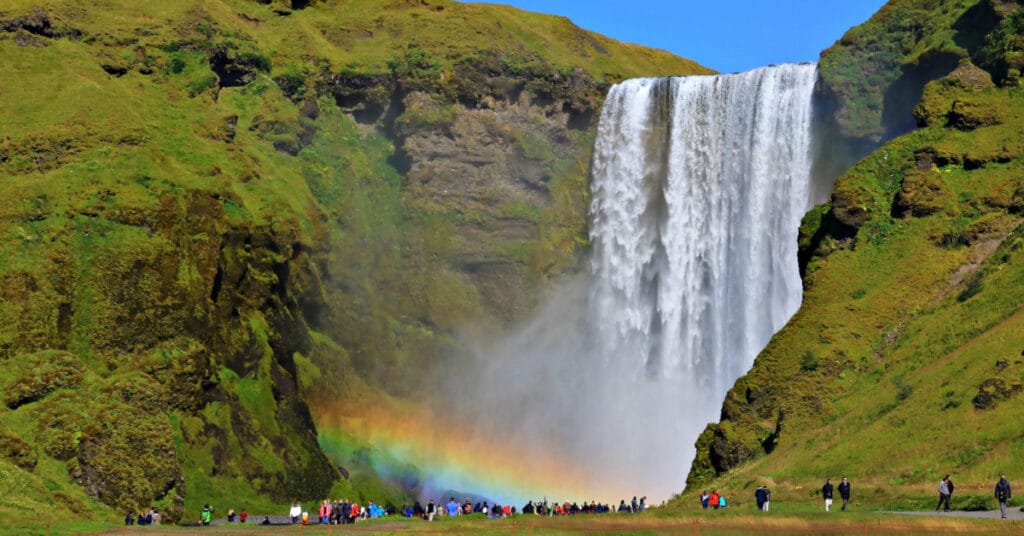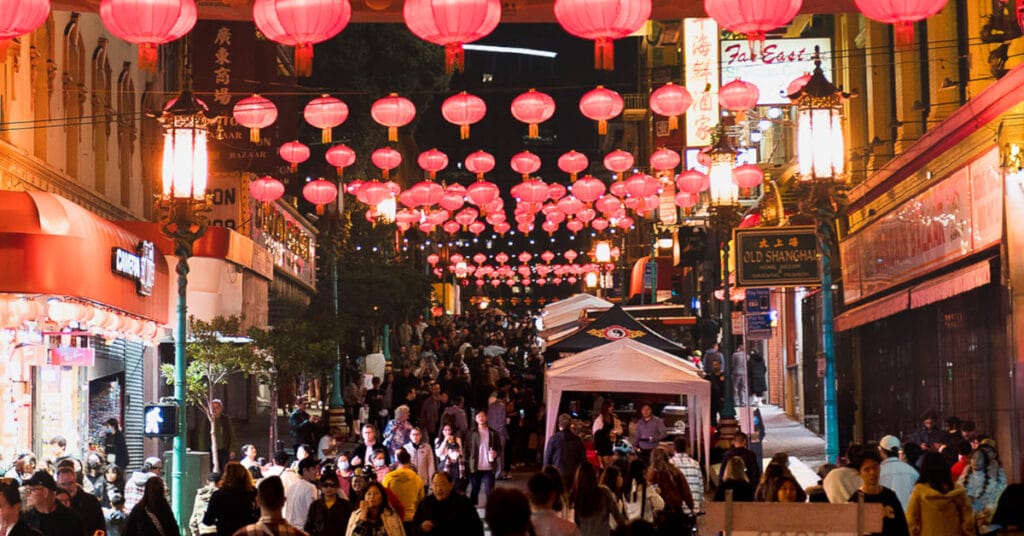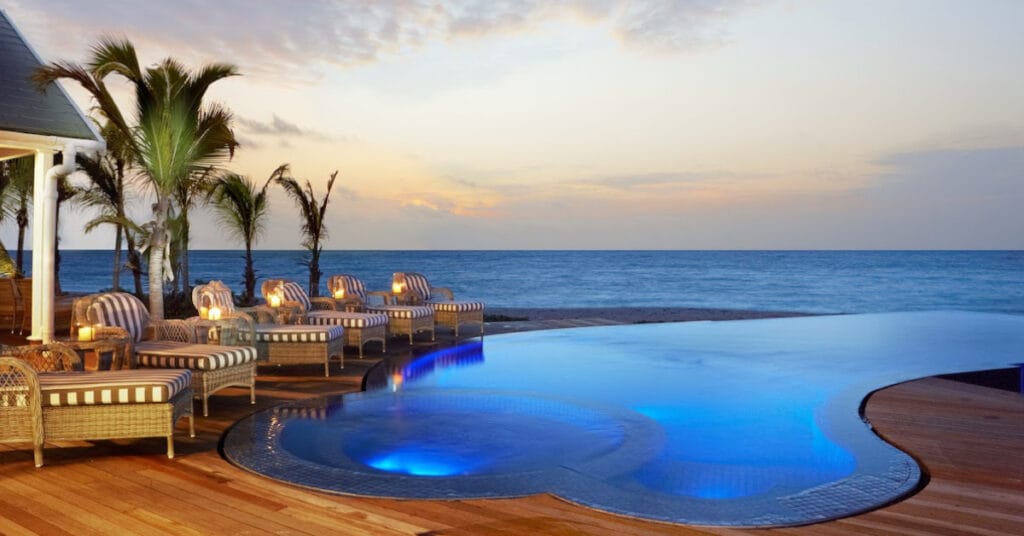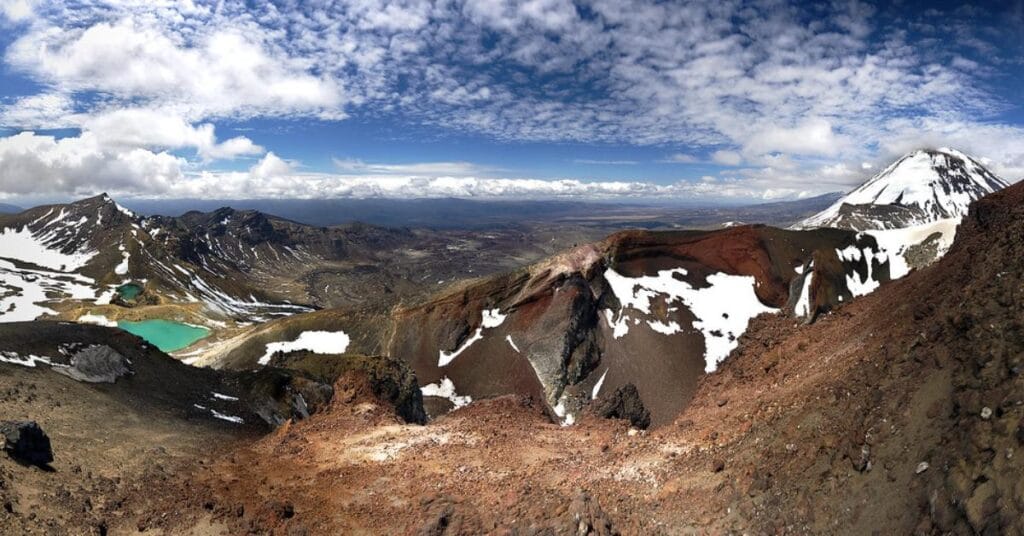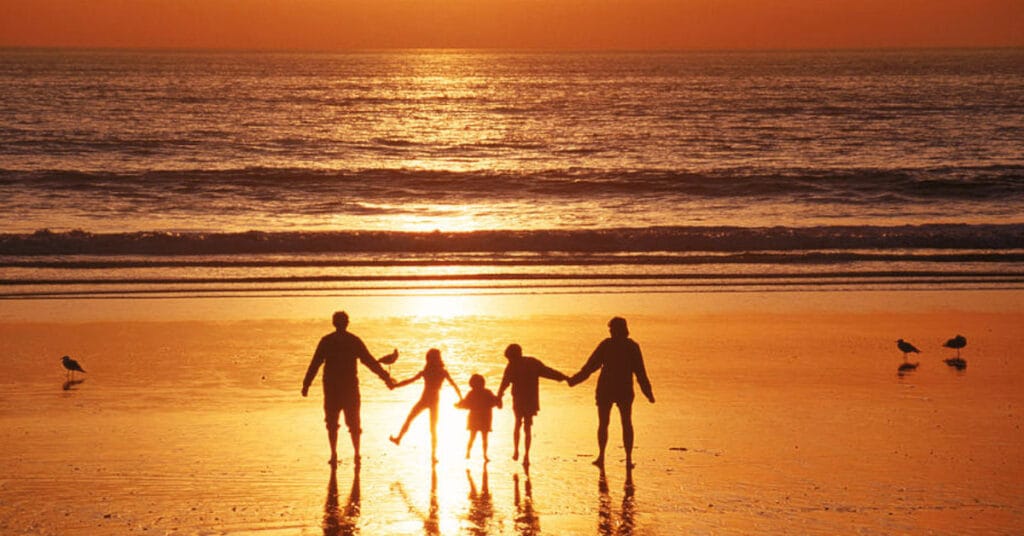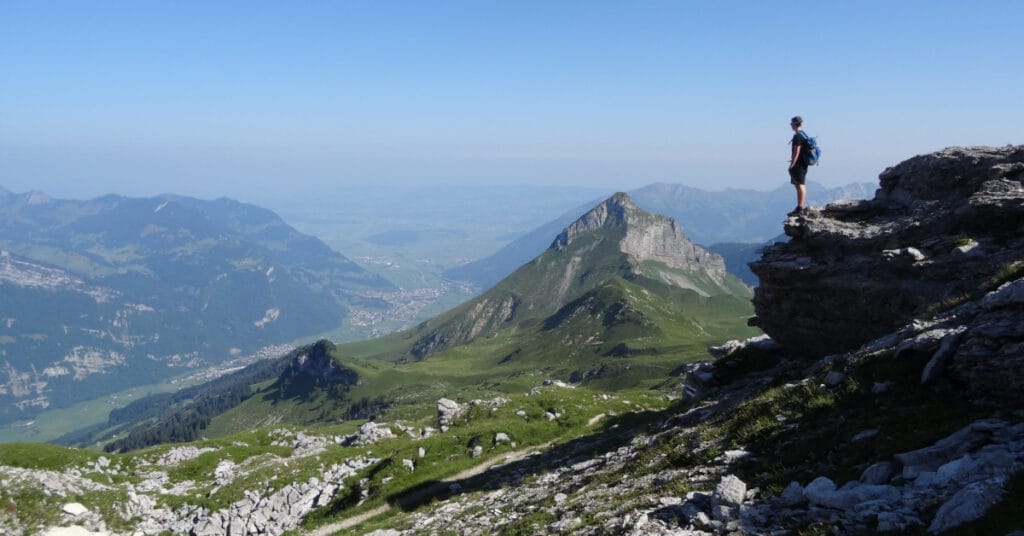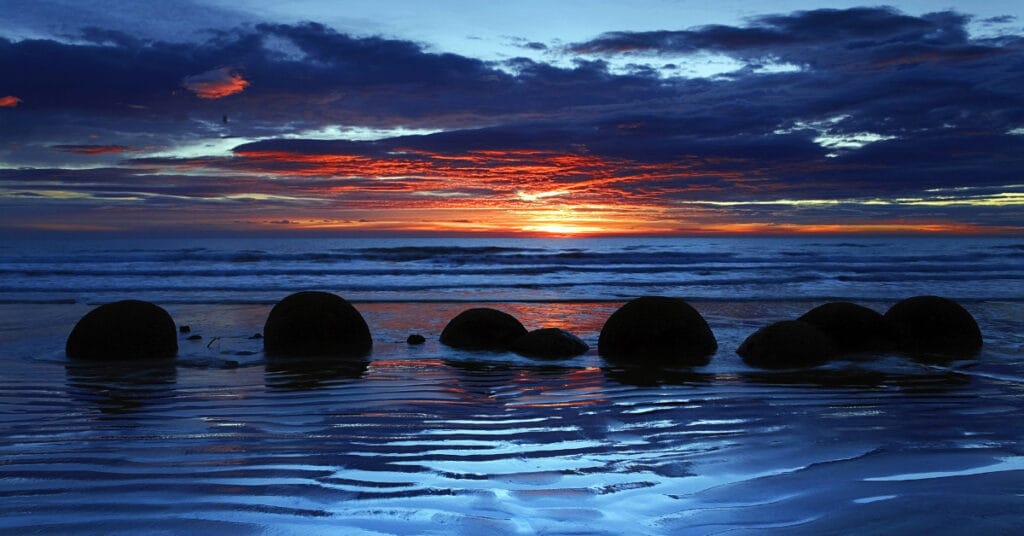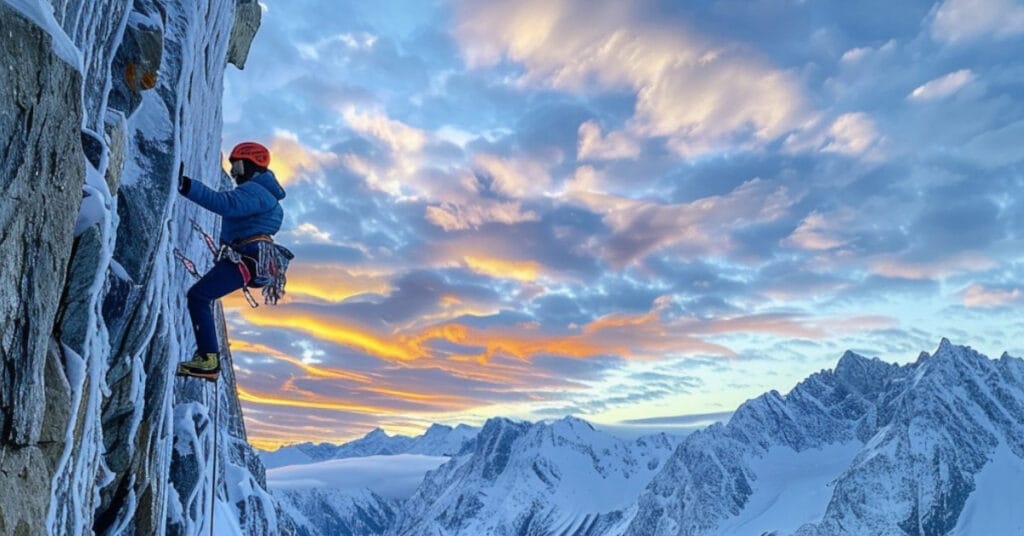
Iceland ice climbing on glaciers is a thrilling experience that combines adventure, stunning scenery, and the unique opportunity to climb some of the most spectacular ice formations on Earth. With vast glaciers covering around 11% of Iceland’s landmass, ice climbing is a popular activity for adventure seekers visiting the country. In this guide, we’ll explore the best glaciers for ice climbing in Iceland, essential tips, what to expect on an ice-climbing tour, and how to prepare for this once-in-a-lifetime adventure.
Why Ice Climb in Iceland?
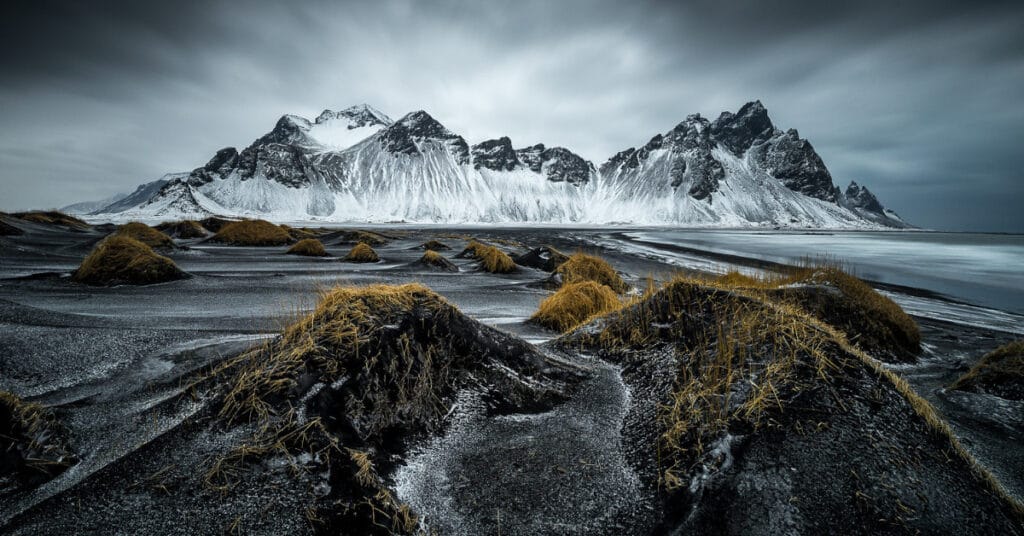
The Land of Fire and Ice
Iceland is often referred to as the Land of Fire and Ice for its mix of glaciers and volcanic activity. This provides the perfect environment for ice climbing enthusiasts. The contrast between the icy landscape and the volcanic terrain creates breathtaking views, and the glaciers themselves are dynamic and constantly changing, making each climb unique. With options for both beginners and advanced climbers, Iceland offers glacier ice climbing experiences suitable for all skill levels.
Year-Round Ice Climbing
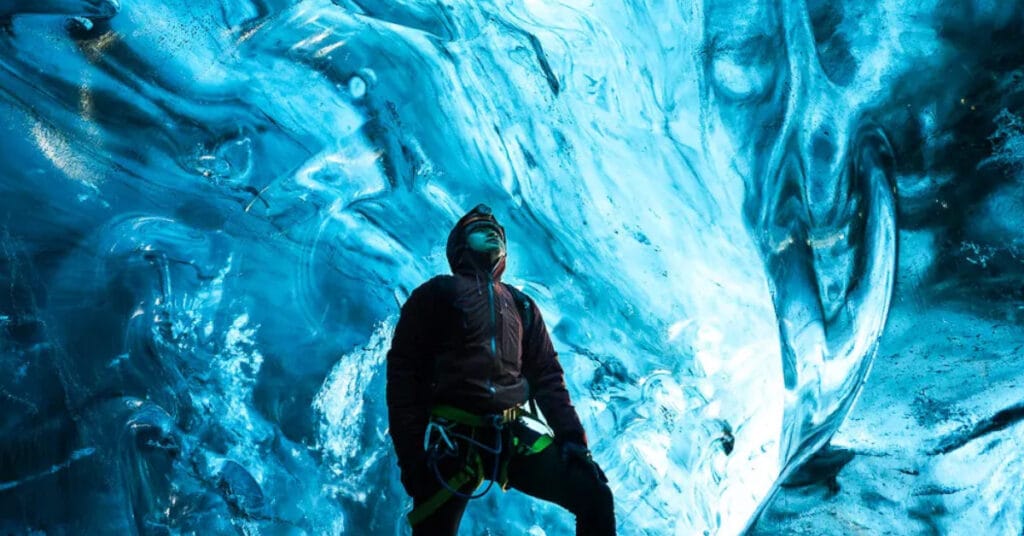
One of the advantages of ice climbing on glaciers in Iceland is that it’s available year-round. While winter offers the quintessential icy experience, summer ice climbing is equally exciting as the glaciers remain active and accessible.
Best Glaciers for Ice Climbing in Iceland
1. Svínafellsjökull Glacier
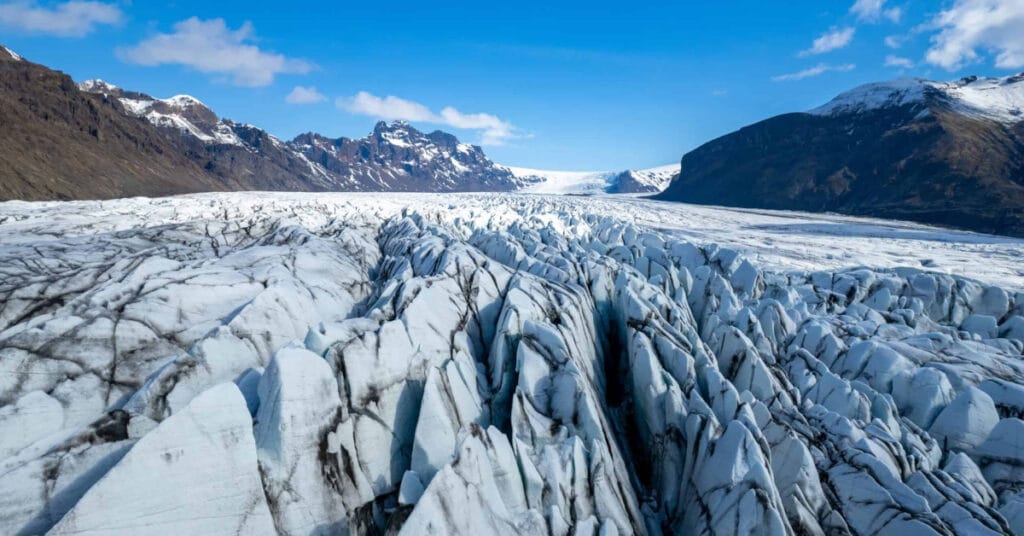
Located in the Skaftafell region, Svínafellsjökull is one of the most accessible and popular glaciers for ice climbing. Part of the massive Vatnajökull glacier, Svínafellsjökull offers an excellent environment for beginners and intermediate climbers.
- What to Expect: Towering ice walls, deep crevasses, and stunning views of surrounding mountains.
- Why It’s Special: The glacier is known for its blue ice, formed by the compression of ancient ice, giving it a mesmerizing color.
2. Solheimajökull Glacier
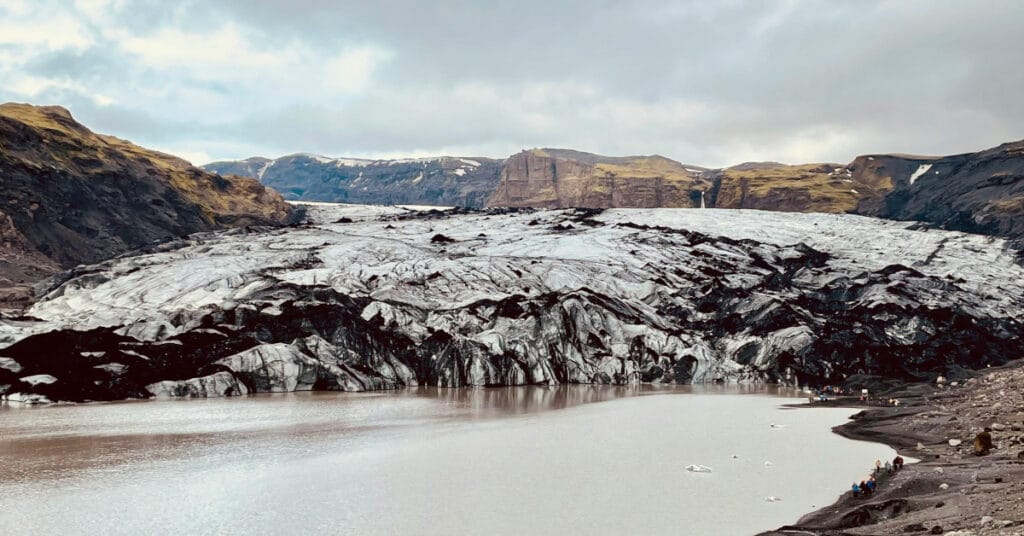
Another popular destination, Solheimajökull is located in the south of Iceland. It’s one of the closest glaciers to Reykjavik, making it a great option for day trips.
- What to Expect: Ice formations, frozen ridges, and ice caves.
- Best For: Beginners and those looking for an introduction to ice climbing in Iceland.
3. Falljökull Glacier
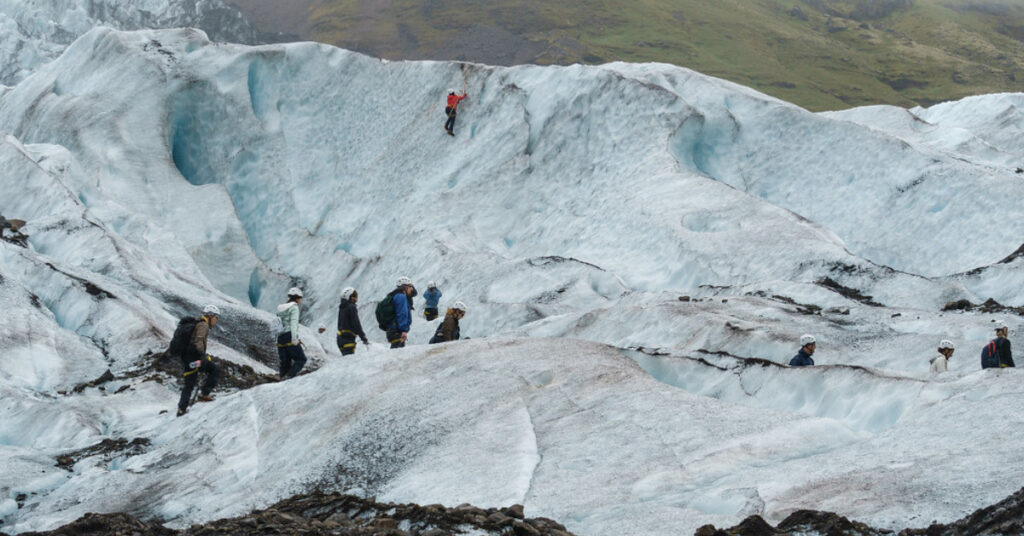
For those looking for a more challenging adventure, Falljökull, located near Skaftafell, offers steeper ice walls and more technical climbs. The glacier descends from the Vatnajökull ice cap, offering a diverse climbing environment.
- What to Expect: Steep ice walls, crevasses, and spectacular views of the surrounding glacial valley.
- Best For: Intermediate to advanced climbers.
How to Prepare for Ice Climbing in Iceland
Guided Ice Climbing Tours
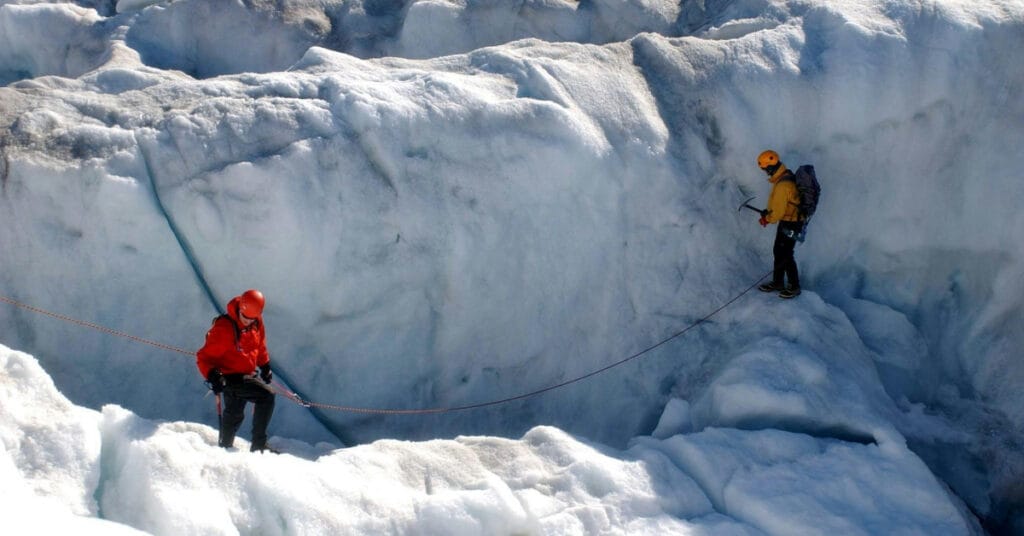
It’s highly recommended to book a guided ice climbing tour in Iceland, especially if you are new to ice climbing. Professional guides ensure safety, provide the necessary gear, and offer expert advice on how to navigate the glacier. The most common areas for guided tours are in Vatnajökull National Park and Skaftafell.
Essential Ice Climbing Gear
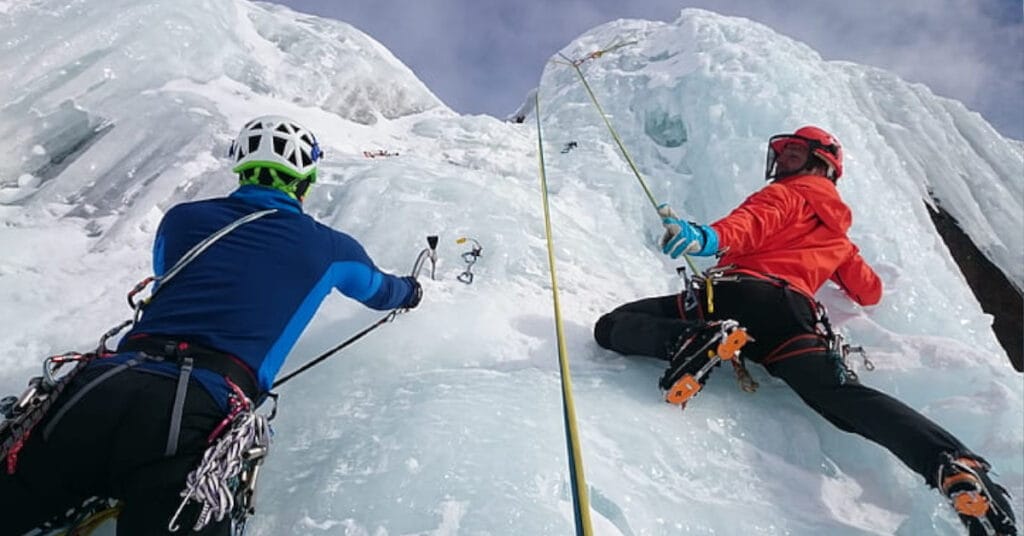
Whether you’re climbing for the first time or have some experience, you’ll need specialized gear for ice climbing, which is usually provided by tour companies:
- Crampons: Metal spikes attached to your boots for grip on the ice.
- Ice Axes: Used for ascending the ice wall.
- Harness: For safety and climbing support.
- Helmet: Essential for protection from falling ice.
- Climbing Boots: Stiff boots that allow crampons to be attached securely.
- Warm, Waterproof Clothing: Iceland’s weather can be unpredictable, so layered clothing and waterproof outerwear are crucial.
Fitness and Experience
While you don’t need to be an expert to enjoy ice climbing on glaciers in Iceland, a basic level of fitness is required. You’ll be using your upper body to pull yourself up and your legs to grip the ice, so having good physical endurance will help. Many tour operators offer beginner-friendly routes, but if you’re looking for more challenging climbs, prior experience is a plus.
Safety Considerations for Ice Climbing
Ice Climbing Safety in Iceland

Safety is the top priority when ice climbing on glaciers. Iceland’s glaciers are dynamic environments that can change rapidly due to weather and melting ice. Here are some essential safety tips:
- Always Climb with a Guide: Never attempt to ice climb without an experienced guide. Glacier conditions can be hazardous without the proper knowledge and equipment.
- Check the Weather: Iceland’s weather can change quickly. It’s essential to check the weather forecast and listen to your guide’s advice about safe climbing conditions.
- Use Proper Gear: Only use gear that’s in good condition, and make sure everything is secured properly before climbing.
- Be Aware of Crevasses: Glaciers are full of crevasses—deep cracks in the ice that may be hidden. Follow your guide closely to avoid these dangerous areas.
Environmental Considerations
Iceland is committed to environmental sustainability, so it’s important to be mindful of the impact you have while exploring its glaciers. Stick to marked paths, avoid littering, and follow any guidelines provided by tour operators to help preserve the natural beauty of the glacier.
What to Expect on an Ice Climbing Tour
The Climb
Your ice-climbing adventure will usually begin with a safety briefing and equipment fitting. You’ll then hike to the base of the glacier, where your guide will explain the basics of ice climbing, including how to use crampons and ice axes. Once you’re ready, you’ll start the ascent. The climb itself can vary depending on the glacier and your skill level. Beginners will likely start on smaller ice walls, while more experienced climbers may tackle vertical walls or even ice falls.
Scenic Views

One of the best parts of ice climbing on glaciers in Iceland is the scenery. From towering ice formations to sweeping views of Iceland’s mountains and valleys, the sights are truly breathtaking. On a clear day, you may even spot the distant volcanoes that dot the landscape.
After the Climb
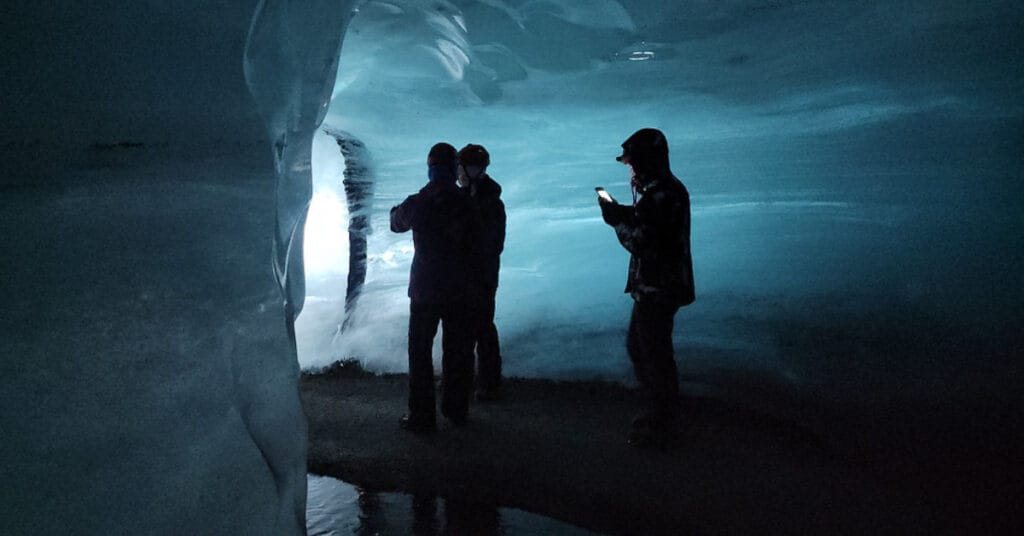
Once your ice climbing session is over, you’ll hike back to the starting point. Many tours also offer the opportunity to explore ice caves or walk along glacial ridges for added adventure.
FAQs About Ice Climbing on Glaciers in Iceland
Do I need prior experience to ice climb in Iceland?
No prior experience is necessary for many beginner-friendly tours. Guides will teach you the basics and provide all the equipment you need for a safe and enjoyable climb.
When is the best time for ice climbing in Iceland?
While ice climbing in Iceland is available year-round, the winter months (October to March) provide the most authentic icy experience. Summer ice climbing (June to August) is still possible, with stable glacier conditions.
How long does an ice climbing tour last?
Most ice climbing tours last between 4-6 hours, including gear setup, hiking to the glacier, and the actual climbing session.
Conclusion
Iceland ice climbing on glaciers offers a thrilling adventure that combines incredible scenery, physical challenge, and the unique opportunity to explore some of the world’s most beautiful ice formations. Whether you’re an experienced climber or a beginner looking for a new challenge, Iceland’s glaciers provide the perfect backdrop for an unforgettable ice-climbing experience. With proper preparation, expert guides, and respect for the environment, your ice climbing adventure will be one for the books.

